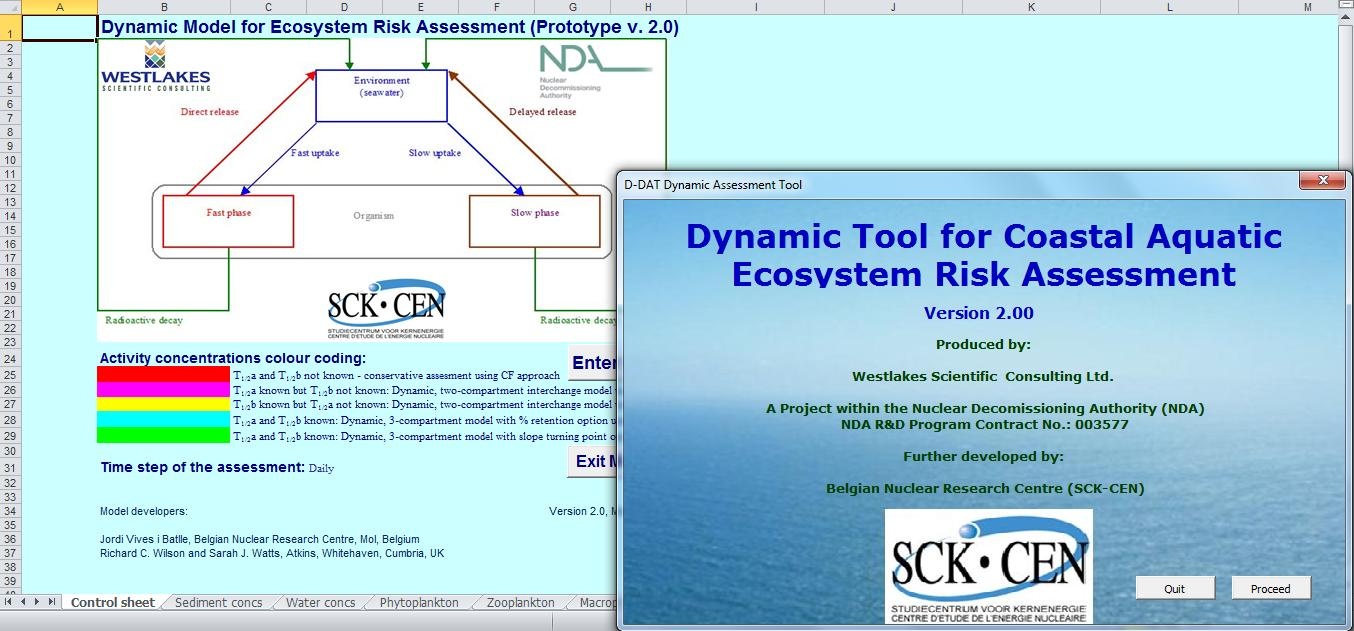Dynamic model for marine organisms
Dynamic tool for the assessment of radiation doses to marine biota. A generic approach has been developed by WSC (funded by the Nuclear Decommissiong Authority) to simulate dynamically the uptake and turnover of a number of radionuclides by marine biota. The approach incorporates a three-compartment biokinetic model based on first order linear kinetics, with interchange rates between the organism and its surrounding environment. Model rate constants are deduced as a function of known parameters: biological half-lives of elimination, concentration factors and a sample point of the retention curve, allowing for the representation of multicomponent release. Radionuclides considered are 99Tc, I-isotopes, Cs-isotopes and 241Am. The new methodology has been tested and compared to non-dynamic assessment models developed for regulatory purposes. The approach has also compares well against research dynamic models developed to represent the uptake of technetium and radioiodine by lobsters and winkles. Assessments conducted on two realistic test scenarios demonstrated the importance of simulating time-dependency for ecosystems in which environmental levels of radionuclides are not in equilibrium.
The demonstration version of the model is freely available click here together with user instructions
Disclaimer
This demonstration version of the assessment tool is supplied "as seen", for evaluation purposes only. A fully tested release version of the tool is currently under development. It is not intended that this demonstration version be relied upon for decision making in "real" assessments and is for evaluation purposes only. (Contact Jordi Vives i Batlle for further information).
For further information:
Vives i Batlle, J., Wilson, R.C., Watts, S.J., Jones, S.R., McDonald, P. and Vives-Lynch, S (2008) Dynamic model for the assessment of radiological exposure to marine biota. Journal of Environmental Radioactivity 99 (11), 1711-1730.
